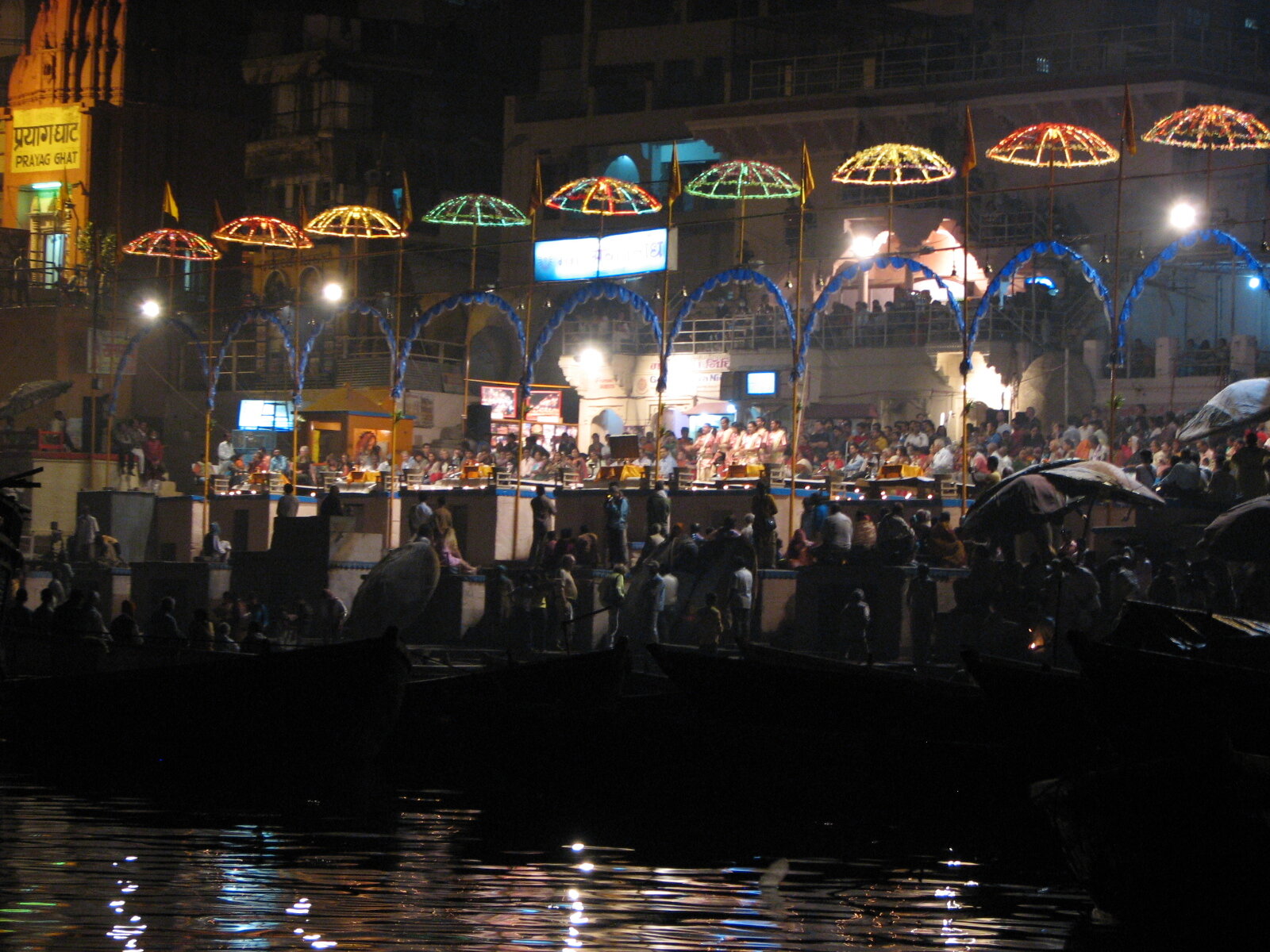Varanasi Rickshaw Ride
Our arrival in Varanasi came with quite an air of excitement. Varanasi (also known as Benares and Kashi) is an ancient city. Our guide said Varanasi has a written history of over 4,000 years. Some say it has been a city continuously for over 5,000 years. Mark Twain said, “Benares (Varanasi) is older than history, older than tradition, older even than legend, and looks twice as old as all of them put together”. Legend says that Varanasi was founded by the Hindu deity, Lord Shiva. The city draws people from all over the world. The Beatles made a big splash when they visited Varanasi and got a local (Ravi Shankar) to play with them on an album or two. Goldie Hawn was in Varanasi when we were there and made the front page of the newspaper. Varanasi has long been the home of many prominent Indian philosophers, writers, musicians, and poets. It has several important universities.
Varanasi is considered one of the most intensely religious cities in the world. The city has hundreds of temples. It’s a holy city for the Hindus, Buddhists, and Jains. These religions have closely associated Varanasi with the Ganges River and it has been a religious and cultural center for thousands of years. Gautama Buddha gave his first sermon near here. One million Hindu pilgrims visit Varanasi every year.
We left our hotel at 5:00 pm for an event that our guide described as “the highlight of our entire trip to India”. But first, we had to get to the Ganges River for the event. Part of the trip included about a 45 minute rickshaw ride through old Varanasi. The streets we traveled were wider than in Old Delhi but that allowed vehicle traffic which made it much more dangerous. I almost got hooked on a Brahma bull’s horn once during the ride. With all the vehicle lights, horn honking, good and bad smells, potholes in the road, and heavy traffic, it was a wild ride. I told Vicky that my description was as if the old Santa Cruz Boardwalk had combined the “fun house” and “bumper car” rides into one event. Vicky agreed saying, “yea, you never know what’s going to happen next”. That proved to be an incredible understatement.
This next commentary is from my daily journal, as written that night after returning to our hotel.
“Next, our driver made a wicked sharp left turn heading down what looked like a dark alley. In a few seconds we were in total darkness, moving under some type of structure, and it smelled like the place a million guys had been urinating every day for a year. We went a short ways further and stopped. I told Vicky, “What did we get ourselves into this time?”
I thought maybe the driver thinks we’re rich and famous and he’s kidnapped us. I knew that I had trained my kids right and that they wouldn’t be sending any ransom money. I hopped down from the rickshaw ready for the fur to fly and to protect my woman.”
Shortly afterwards, we heard some familiar voices, those of our companions and guides. As it turned out, Varanasi had just had a city-wide power outage, just as we cut down the small alley. Next, still in the dark, we had to make our way to the Ganges River. Again from my journal:
“It was all downhill over consistently uneven ground, including many steps, completely surrounded by hawkers, beggars, cripples, con artists, fake holy men, pilgrims, and enough small kids trying to ‘help’ us that I was having to physically make some room at times. I had my headlight flashlight with me but I never used it as I was afraid everyone would flock to us like moths to a porch light. We eventually made it to the banks of the Ganges.
The first two photos are during the rickshaw ride down towards the Ganges. The third photo was shortly after we stopped in the dark alley at the end of our rickshaw ride. I doubled over several times from the smells during the ride, so I put a handkerchief over my nose and mouth. Vicky said the smells didn’t bother her that much, but they were getting to me. Finally, she said that it was amazing that my sense of smell was better than hers since my sinuses have bothered me for many years. After thinking about that, and my current stomach flu condition, I told Vicky, “My body picked a great time for my lower half to quit working and my upper half to start working”.
























